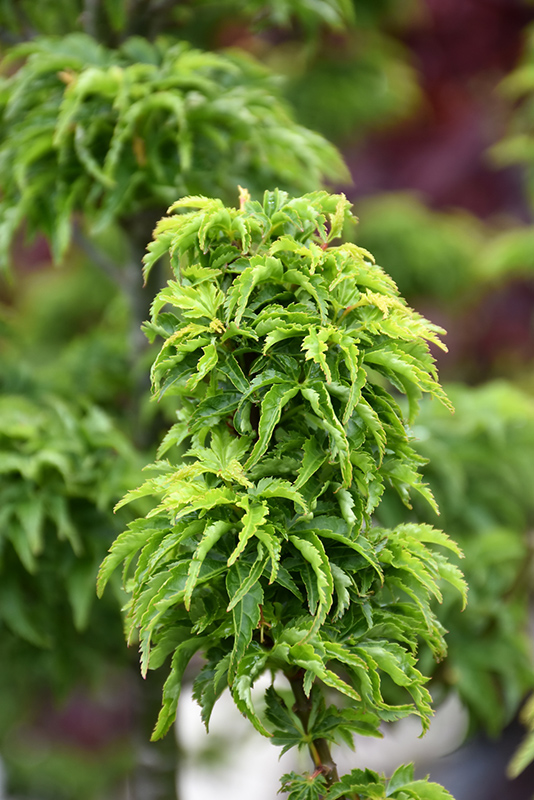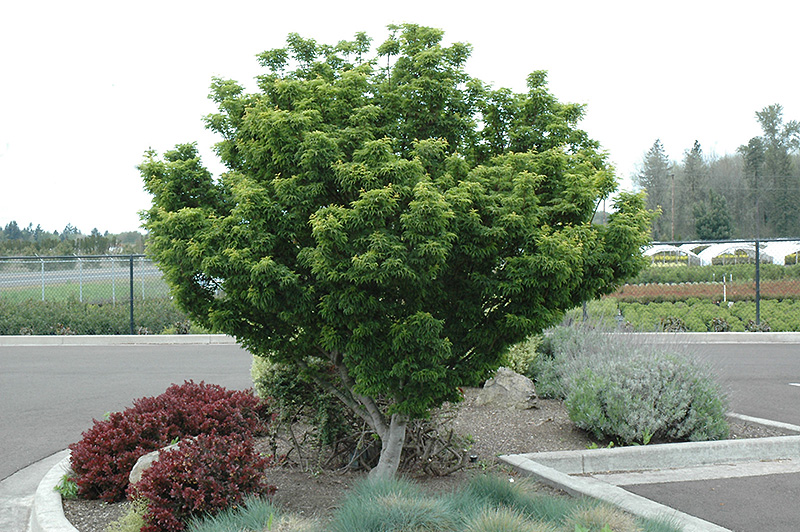Japanese Maple, Lions Head Acer palmatum 'Shishigashira' Height: 15 feet Spread: 12 feet
Sunlight:
Hardiness Zone: 5b Other Names: Acer palmatum 'Shishigashira' Description: An unusual, bold addition to the garden; deeply curled and crinkled bright green leaves are held in close knit bunches, adding interest; develops its fall color much later in the season than most other varieties. Needs afternoon shade and wind protection. Ornamental Features Japanese Maple, Lions Head is primarily valued in the landscape for its ornamental upright and spreading habit of growth. It features subtle corymbs of burgundy flowers rising above the foliage in mid spring before the leaves. It has attractive green deciduous foliage which emerges red in spring. The crinkled palmate leaves are highly ornamental and turn outstanding shades of gold and crimson in the fall. The rough gray bark and red branches add an interesting dimension to the landscape. Landscape Attributes Japanese Maple, Lions Head is an open deciduous tree with an upright spreading habit of growth. It lends an extremely fine and delicate texture to the landscape composition which can make it a great accent feature on this basis alone. This is a relatively low maintenance tree, and can be pruned at anytime. It has no significant negative characteristics. Japanese Maple, Lions Head is recommended for the following landscape applications; Planting & Growing Japanese Maple, Lions Head will grow to be about 15 feet tall at maturity, with a spread of 12 feet. It has a high canopy with a typical clearance of 5 feet from the ground, and is suitable for planting under power lines. It grows at a slow rate, and under ideal conditions can be expected to live for 80 years or more. This tree should be grown in a location with partial shade and which is shaded from the hot afternoon sun. It prefers to grow in average to moist conditions, and shouldn't be allowed to dry out. This plant should be periodically fertilized throughout the active growing season with a specially-formulated acidic fertilizer. It is not particular as to soil pH, but grows best in rich soils. It is somewhat tolerant of urban pollution, and will benefit from being planted in a relatively sheltered location. Consider applying a thick mulch around the root zone in winter to protect it in exposed locations or colder microclimates. This is a selected variety of a species not originally from North America. Special Attributes Japanese maples generally produce a few to no seeds called samaras, which are commonly referred to as helicopters 1/2 to 3/4 of an inch long, and approximately 1/4 inch wide. Growing in pairs, they start green then mature red during the growing season![]()
![]()
![]()
![]()
![]()
![]()
![]()
![]()
![]()
![]()
![]()
![]()
![]()
![]()



